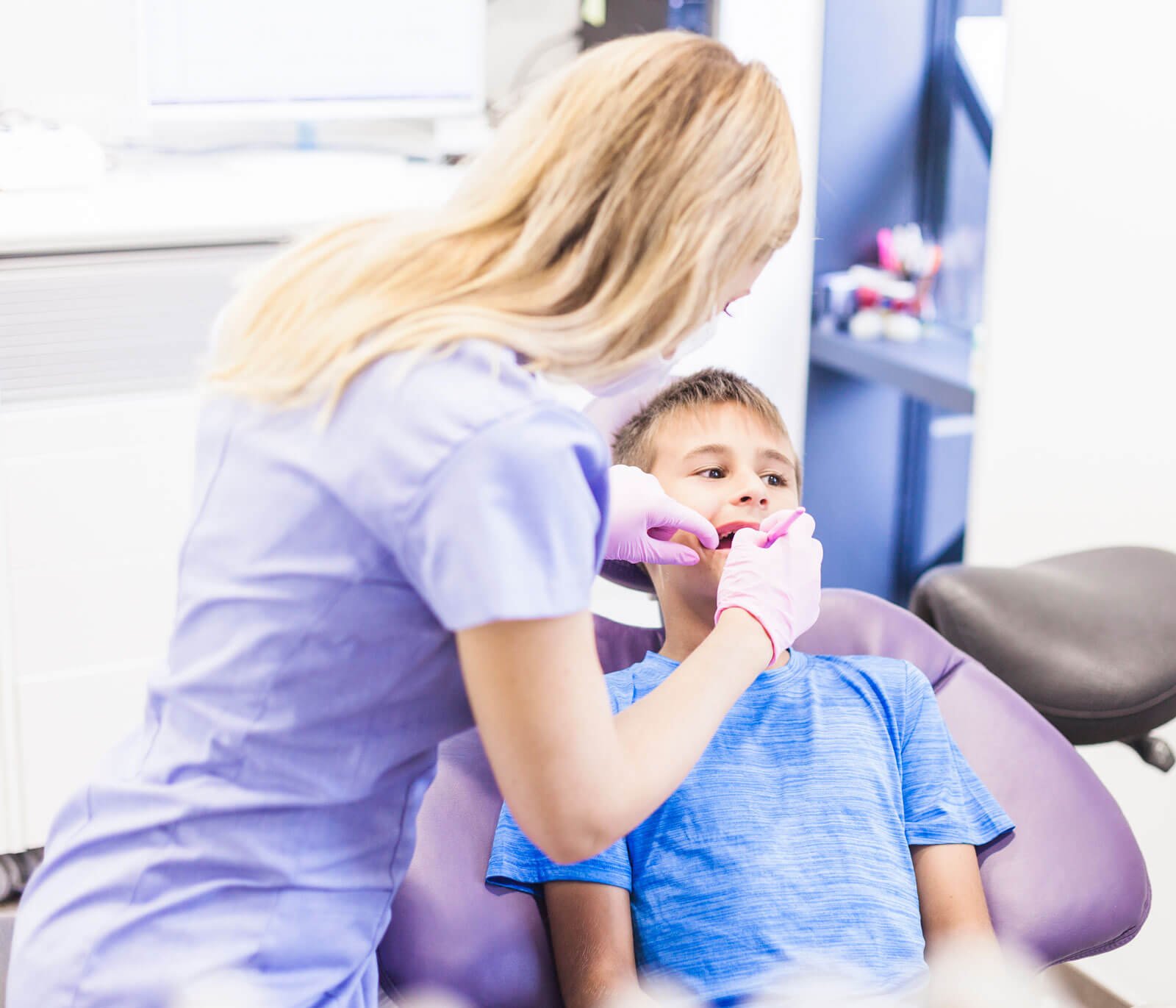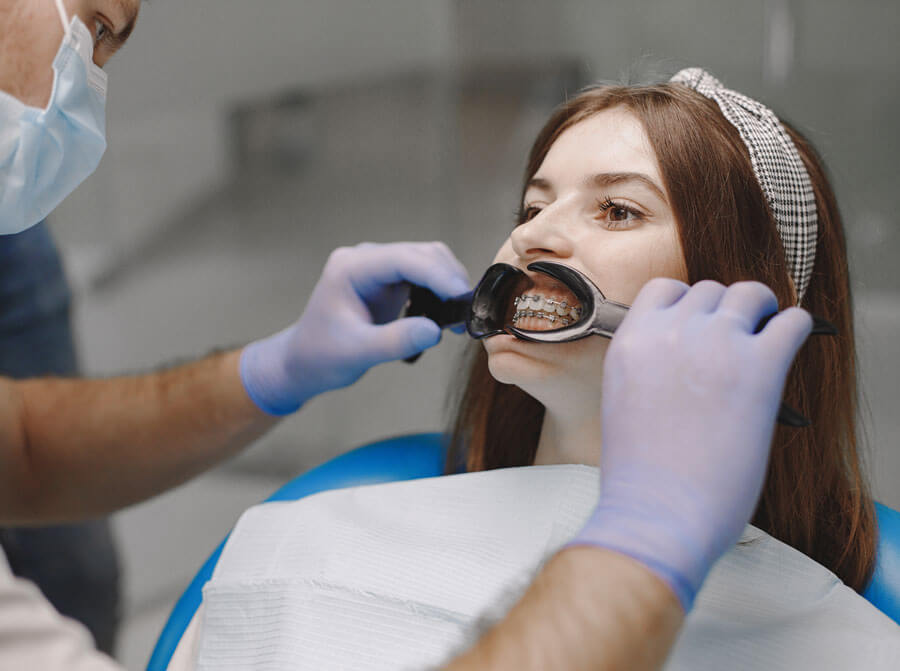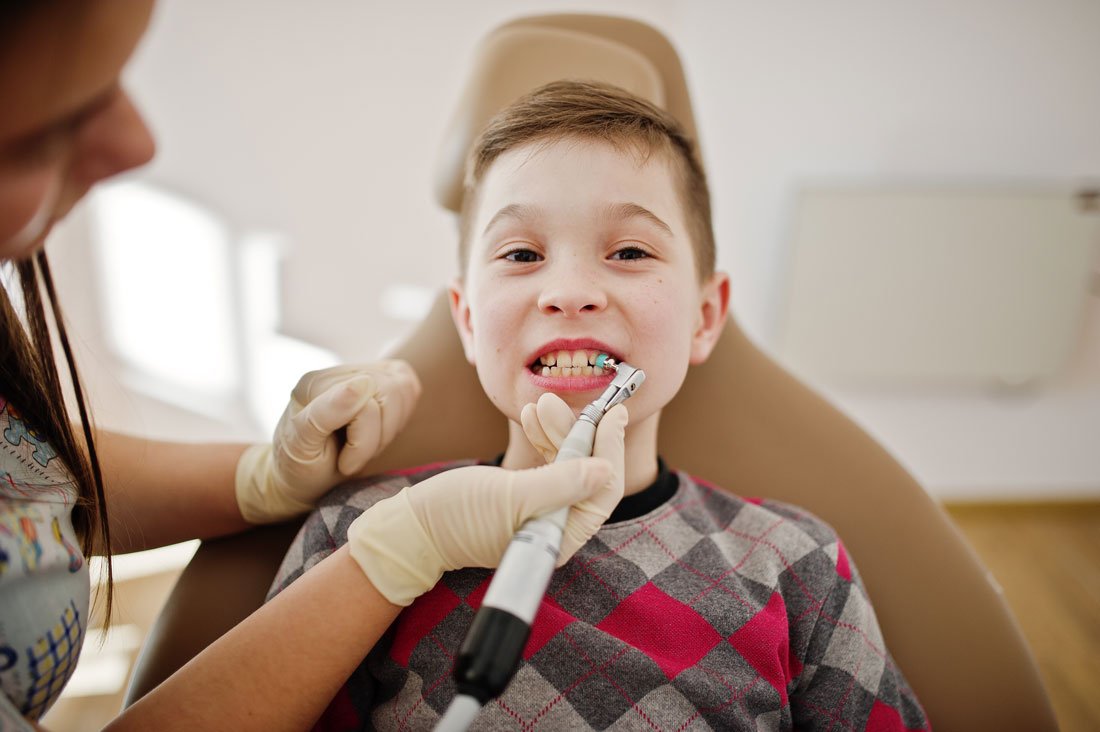Frequently Asked Questions About Early Orthodontic Treatment
Interceptive orthodontic treatment empowers concerned parents to set their children’s dental health on the optimal path for years to come.
Right now, your kid’s oral cavity resembles the foundation of a lifelong home. If sturdy enough, the edifice will stand the test of time. If not, sooner or later, it will crumble.
At this pivotal moment, as a parent, you have two options:
Either take a gamble on your child’s dental health by letting Nature run its course
or
Seize the moment, and stir their smile toward a sparkling future!
Through early orthodontics, Dr. Lee finds and addresses your kid’s current or future dental headaches. His fabled patience and soothing words have helped countless children forget about their dentophobia and embrace orthodontic care with genuine excitement!
For your kid, early orthodontic treatment plants the seed of appreciation for timely dental care.
For you, the parent, it relieves the anxiety for:
- Current dental issues
- Future dental headaches
- Unforeseen medical bills

“Lay the foundation of early orthodontics now, and your kids will reward you with dazzling smiles later!”

What is Interceptive Orthodontic Treatment?
Interceptive orthodontic treatment tackles potential issues a child might face before their permanent teeth fully develop, such as misalignments, supernumerary teeth, and considerable gaps between teeth.
By taking swift measures, Dr. Lee will address these oral health risks head-on, preventing them from escalating into more complex, and therefore, more costly treatment.
Performing assessments at an early stage guarantees that treatment is initiated at the most opportune moment, increasing the likelihood of achieving optimal results.
Why Should My 7-Year-Old Child See an Orthodontist?
The American Association of Orthodontists recommends that the initial orthodontic evaluation occur at the first sign of dental health issues or no later than age 7. At this early age, orthodontic treatment may not be necessary, but vigilant examination can anticipate the most advantageous time to begin treatment.
The age of 7 is the ideal moment for Dr. Lee to examine how your child’s front and back teeth, as well as their upper and lower teeth, relate to each other.
He will also be equipped to discern patterns in the way your child’s teeth might develop going forward. Emerging incisors, for example, hint at possible concerns, such as teeth overcrowding, overbites, and gummy smiles. Furthermore, certain treatments, like expansion and jaw development, are most effective at a young age.
Early evaluations ensure that treatment commences at the right stage while predicting the best results!

What are the Most Common Dental Issues in Children?
Interceptive orthodontic treatment will address many of the oral health issues associated with young age, such as:
- Crossbites
- Underbites
- Missing teeth
- Extra teeth
- Teeth that don’t meet
- Teeth that meet abnormally
- Crowding
- Excessive spacing between teeth
Correcting these dental problems becomes increasingly difficult the longer you put them on hold. Conversely, prompt action calls for minimal treatment with maximum results!
What are the Benefits of Early Orthodontic Evaluation?
Early evaluation allows for timely identification of potential issues while enhancing the chances of effective treatment.
At Patuxent Orthodontics, we use interceptive orthodontic treatments to:
- Avoid injury to protruding teeth
- Create enough room for permanent teeth
- Achieve more symmetrical facial features
- Help adult teeth to grow into their correct positions
- Improve how the lips meet
- Addressing chewing and speech impediments
- Preventing typical dental health concerns such as cavities and teeth grinding
- Saving your precious time and money
A thorough dental examination can also highlight oral habits that could evolve into significant dental issues in the future. It could be something as simple as your child grinding their teeth during sleep. An orthodontic expert specializing in interceptive treatment is trained to identify these early signs!

“As Benjamin Franklin said, ‘An ounce of prevention is worth a pound of cure.’”

What are the 3 Types of Interceptive Orthodontics?


Palatal Expanders for Proper Jaw Growth
In the realm of early orthodontic treatment, the most frequently utilized device is the palatal expander.
Unfortunately, there are certain children whose upper teeth are unable to erupt due to insufficient space. Left untreated, a narrow upper palate can lead to overcrowded teeth and a variety of orthodontic complications.
A palatal expander is a specialized orthodontic tool designed to broaden the upper palate before the bones in the upper jaw fuse post-puberty. The device, made up of two halves linked by a screw, gently spreads apart the jaw bones, simplifying the emergence of permanent teeth. Subsequently, the opening is filled by a fresh wave of bone cells, facilitating the expansion process without causing discomfort.
Dr. Lee will assess if tooth extraction remains necessary following a period of 6-12 months during which your child has worn the palatal expander.
Space Maintainers Preserve the Space Required for Tooth Eruption
Does your child already have ample room for their permanent teeth to come through? That’s fantastic news! Still, they may need a bit of assistance to keep that space intact.
That is where the role of space maintainers becomes essential!
A space maintainer is a specific orthodontic device that ensures there’s sufficient room for the adult teeth to break through. For instance, if a baby tooth falls out prematurely or is extracted, Dr. Lee employs a space maintainer to inhibit the adjacent teeth from encroaching into that space.
This approach allows the permanent tooth to emerge securely in its destined place, avoiding any overcrowding issues!
Baby Tooth Extraction for Permanent Tooth Eruption
The age of 7 is typically the right period for baby teeth to shed. They serve only as temporary placeholders until the permanent teeth arrive.
But what if a baby tooth stubbornly clings on?
Orthodontists widely agree that the longer baby teeth stay, the more they obstruct the emergence of permanent teeth, leading to a complex orthodontic issue, particularly with the canines.
To predict if your child’s canines might face impaction in the future, Dr. Lee harnesses X-ray technology and may advocate for tooth extraction to circumvent this problem!
Does My Child Need to Wear Braces?
An early orthodontic assessment doesn’t mean your child will need braces right away. It simply helps Dr. Lee monitor your child’s development so that if and when the time is right for braces or any other orthodontic treatment, he can begin at the optimal time.
If your child does need braces at this age, they will likely be using what’s known as “pediatric” or “interceptive” braces, which are designed to guide the jaw and incoming permanent teeth into their proper positions.
Every child’s dental development is unique. While some may benefit from early intervention, others may be better off waiting until more of their permanent teeth have erupted. Therefore, the decision should be made in consultation with Dr. Lee after he’s evaluated your child’s specific needs.


Are Braces Cheaper for a Child Than an Adult?
Early intervention in children prevents more serious orthodontic issues later in life, potentially saving time, discomfort, and money in the long run.
Factors affecting the price of braces include the severity of the dental issue, the type of braces used, the length of treatment required, and the orthodontist’s fees.
Often, simpler cases sit on the lower end of the price spectrum, while complex cases (more prevalent in adults due to neglected issues from childhood) sit on the higher end.
Financial considerations also include dental insurance coverage, which can vary widely. Some insurance plans cover braces for patients under 18, but not for adults, unless the orthodontic treatment is deemed medically necessary. It’s essential to check with your insurance provider to understand your coverage.


